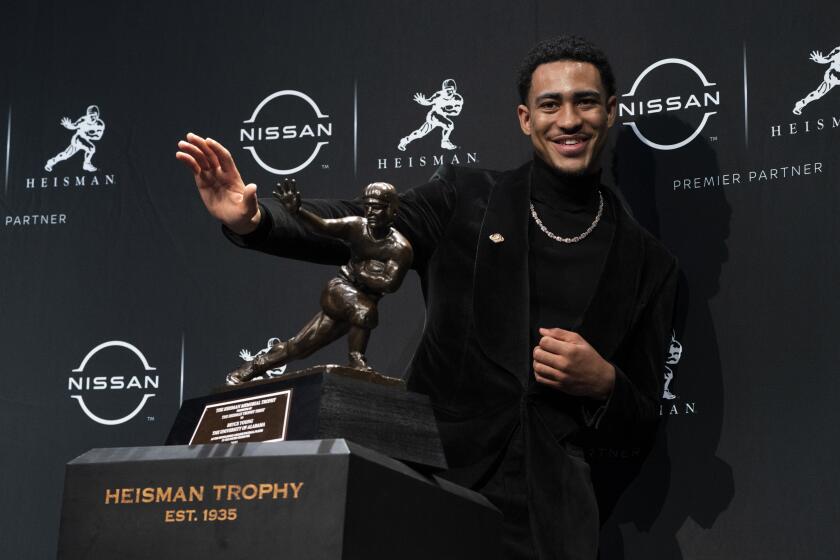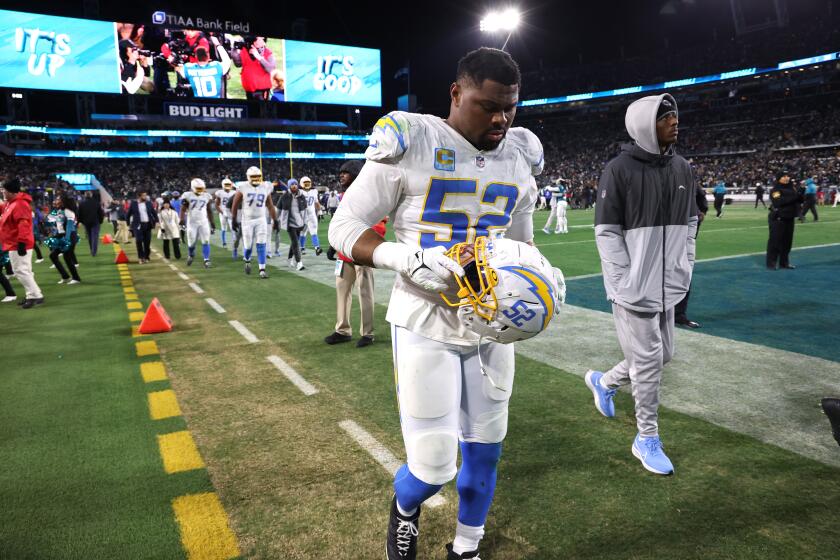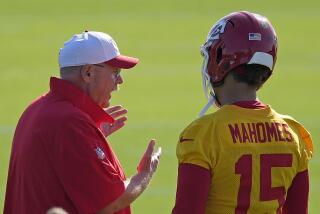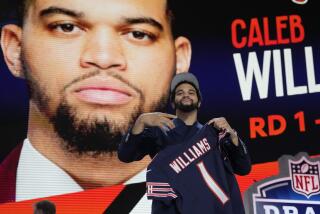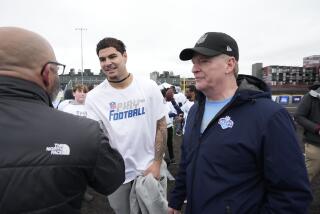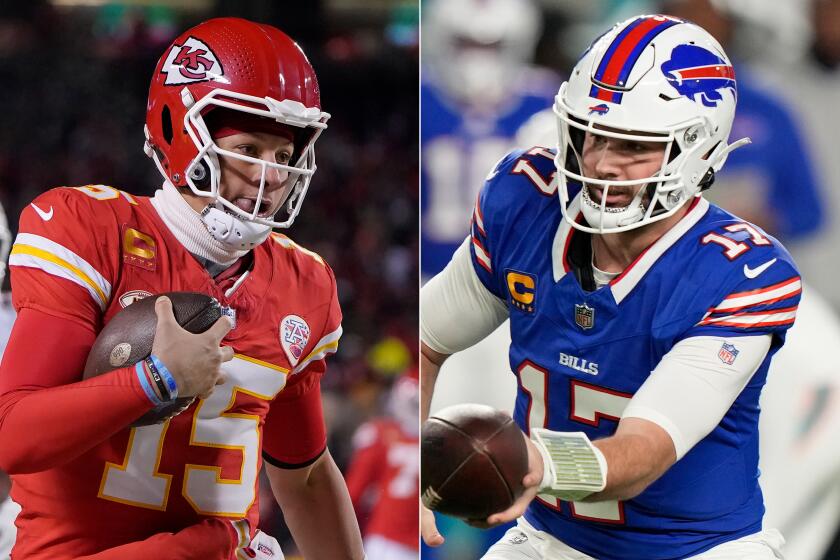Is Bryce Young too small to be top QB in NFL draft? There are three other big choices
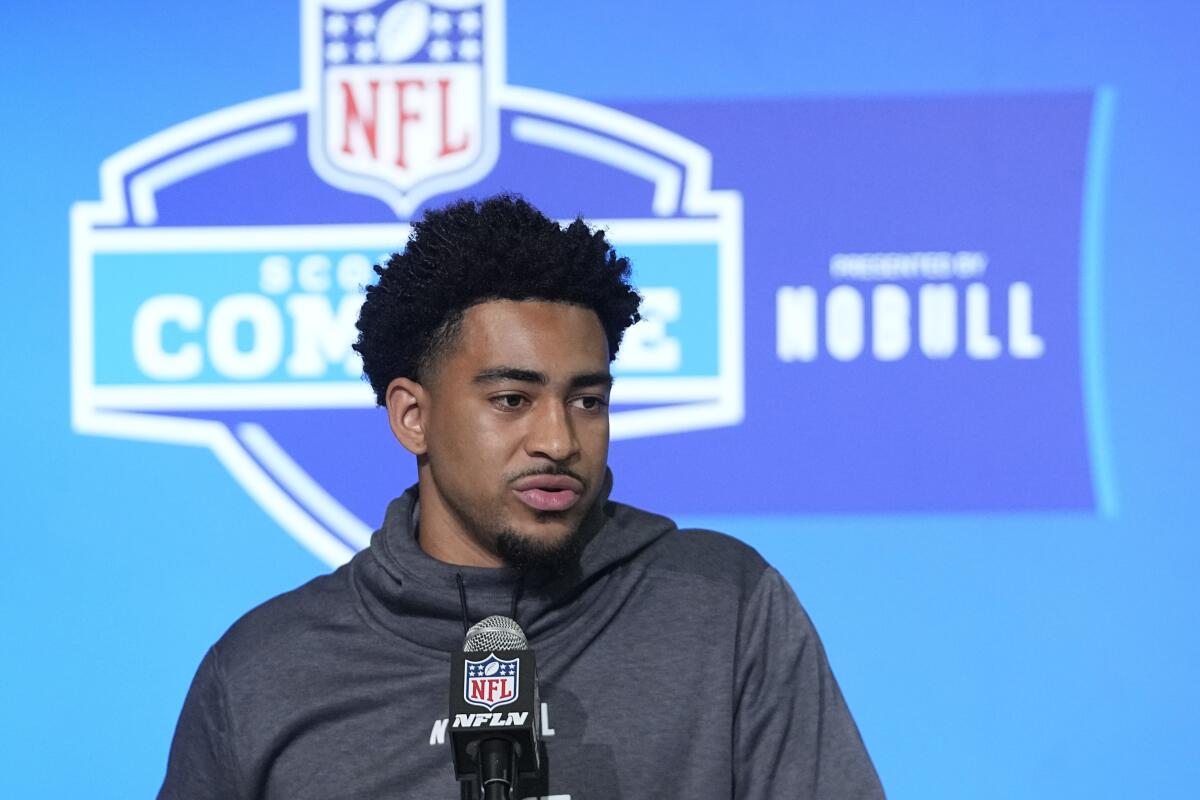
- Share via
INDIANAPOLIS — Quarterback mobility was on display last month in the Super Bowl, and now it’s up to some NFL teams to show their mobility in addressing the position.
Are they willing to trade up in next month’s draft to land a quarterback?
Can they trade back and still secure a good one?
Are they ready to restructure their offense to fit whichever player they get?
These have been central questions at the annual scouting combine this week as the league evaluates the latest crop of prospects. There’s a strong possibility that at least four quarterbacks will be selected among the first nine picks in next month’s draft, with Houston (second pick), Indianapolis (fourth), Las Vegas (seventh) and Carolina (ninth) all looking for answers at the position.
It wouldn’t be a surprise if three other teams in that range also drafted quarterbacks: Seattle (five), Detroit (six) and Atlanta (eight).
Embattled Mater Dei High is updating its Heisman Lane, adding Alabama quarterback Bryce Young to USC’s Matt Leinart and Notre Dame’s John Huarte.
Seasoned passers Aaron Rodgers and Derek Carr could figure into that mix, too, making a muddied picture even murkier. Like a heaved deep ball, the future of Baltimore’s Lamar Jackson likewise is up in the air.
“In an ideal world you always want to draft the quarterback — draft, develop and then have that guy here for five, 10 years,” Panthers general manager Scott Fitterer said. “You want to have that consistency. It helps for many different reasons. The continuity of your roster, for salary cap reasons. There’s so many benefits to drafting and developing. That is the right route to go.”
The upper strata of quarterback prospects is composed of Alabama’s Bryce Young, Ohio State’s C.J. Stroud, Florida’s Anthony Richardson and Kentucky’s Will Levis. The pecking order there? Depends on whom you ask.
“Beauty is in the eye of the beholder,” said Chris Ballard, Colts general manager. “I think everybody’s going to see each guy for the strengths and weaknesses of what they see and how they fit their team. But it’s a good group.”
With the NFL combine starting Tuesday in Indianapolis, here are five positions the Los Angeles Chargers might focus on during this offseason.
These four rookies-to-be are not cookie-cutter prototypes, but individuals with distinct strengths and weaknesses.
Young went 24-3 in two seasons with the Crimson Tide, in 2021 winning Heisman Trophy and Southeastern Conference offensive player of the year honors. He’s relatively small, however, and is listed — generously, it appears — at 6 feet and 194 pounds.
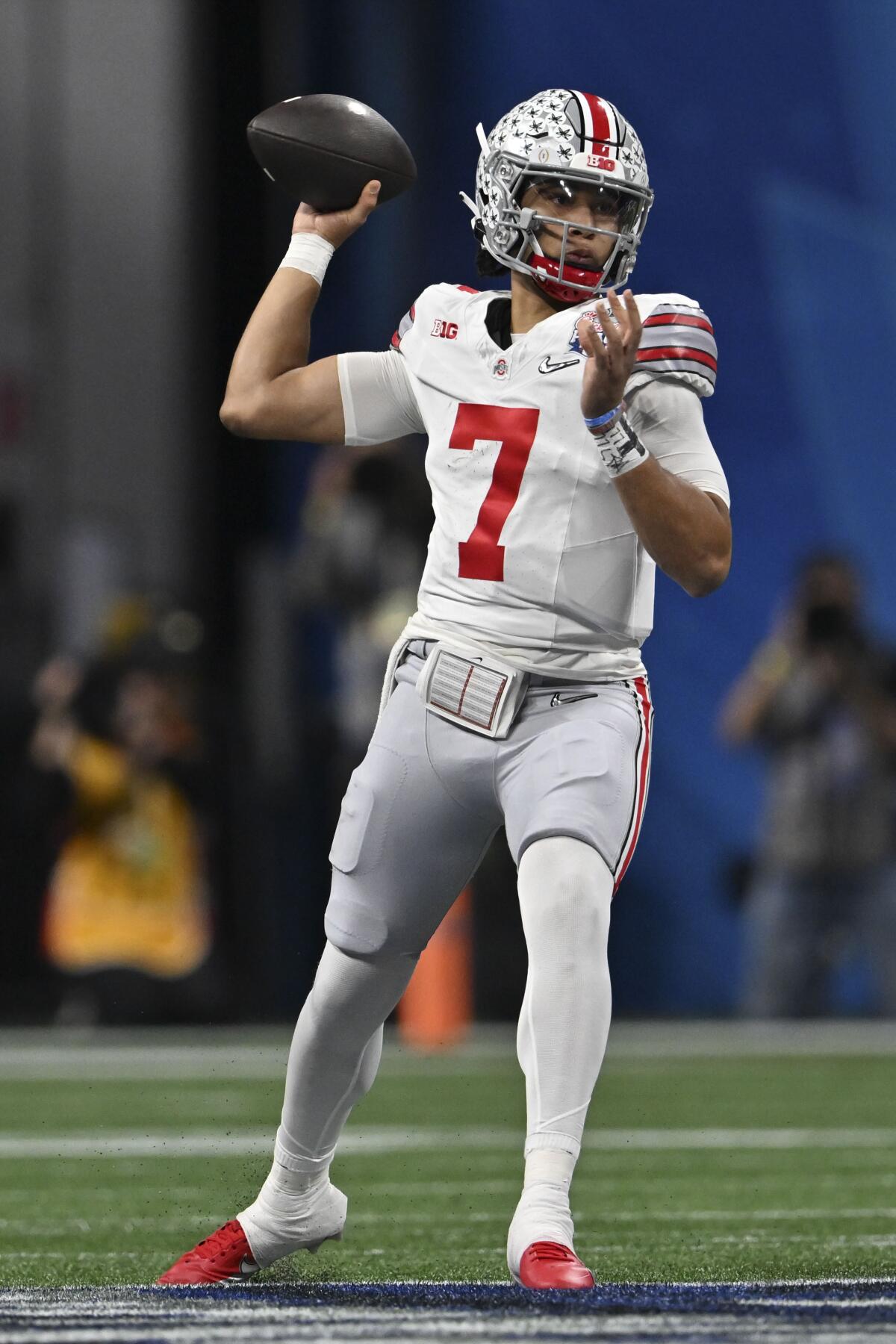
“I’ve been this size, respectfully, my whole life,” he told reporters Friday. “I know who I am, I know what I can do. For me, it’s fair, everyone can speculate, ask me every question. I’m going to continue to control what I can control, continue to keep working my hardest. ... I’m confident in myself. I know what I can do.”
Stroud, of Rancho Cucamonga, is polished and experienced, throwing for 81 touchdowns with just 12 interceptions in two seasons for the Buckeyes. Although there don’t appear to be a lot of holes in his game, he did benefit from excellent pass protection at Ohio State— something he might not have with a rebuilding NFL team — and that university doesn’t have a reputation for pumping out great pro quarterbacks.
Levis wasn’t as productive last season as he was in 2021, and there are lingering questions about his accuracy and footwork. Kentucky went 10-3 with him starting two years ago, but 7-6 last season.
“I think this past year, season didn’t go as well as we would’ve wanted it to,” he said. “But I learned a lot from it. Learned how to battle through adversity. Dealt with a lot of things physically and situationally that were tough, but I became a better player, a better quarterback because of it.”
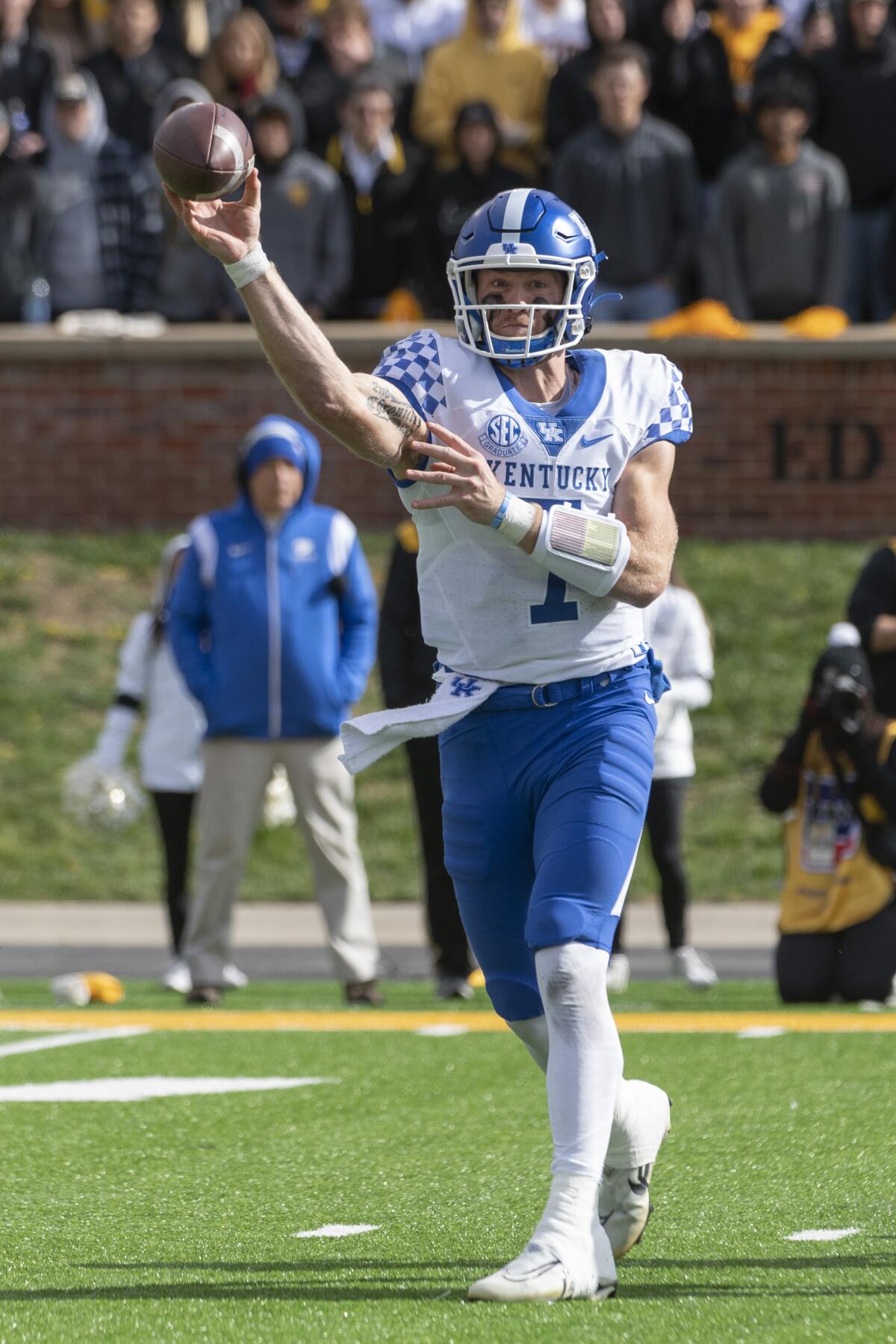
There’s a lot of buzz at the combine surrounding the 6-foot-4, 231-pound Richardson, who has less experience than many of the other quarterback prospects but throws scorching spirals. He was the full-time starter for one season at Florida (he completed a combined 39 passes in 10 appearances before that) and had a modest completion rate of 53.8% last fall.
It should be noted that Josh Allen’s completion rate coming out of Wyoming was only slightly better at 56.2%, yet he defied the historical trend and actually became more accurate in the pros. The Buffalo Bills star has completed 62.5% of this passes in the NFL.
Richardson raised some eyebrows in his media session Friday when, in reference to his college completion percentage, he said: “I can definitely get better at delivering the ball and helping my guys out. But I can’t also catch every pass. If I could, I would, definitely.”
He later noted: “I’ve had a lot of people telling me I’m throwing it too hard. So when I’m trying to lighten up, it’s not as accurate as I want it to be. So I don’t care if somebody’s complaining about I’m throwing it hard. They better catch it.”
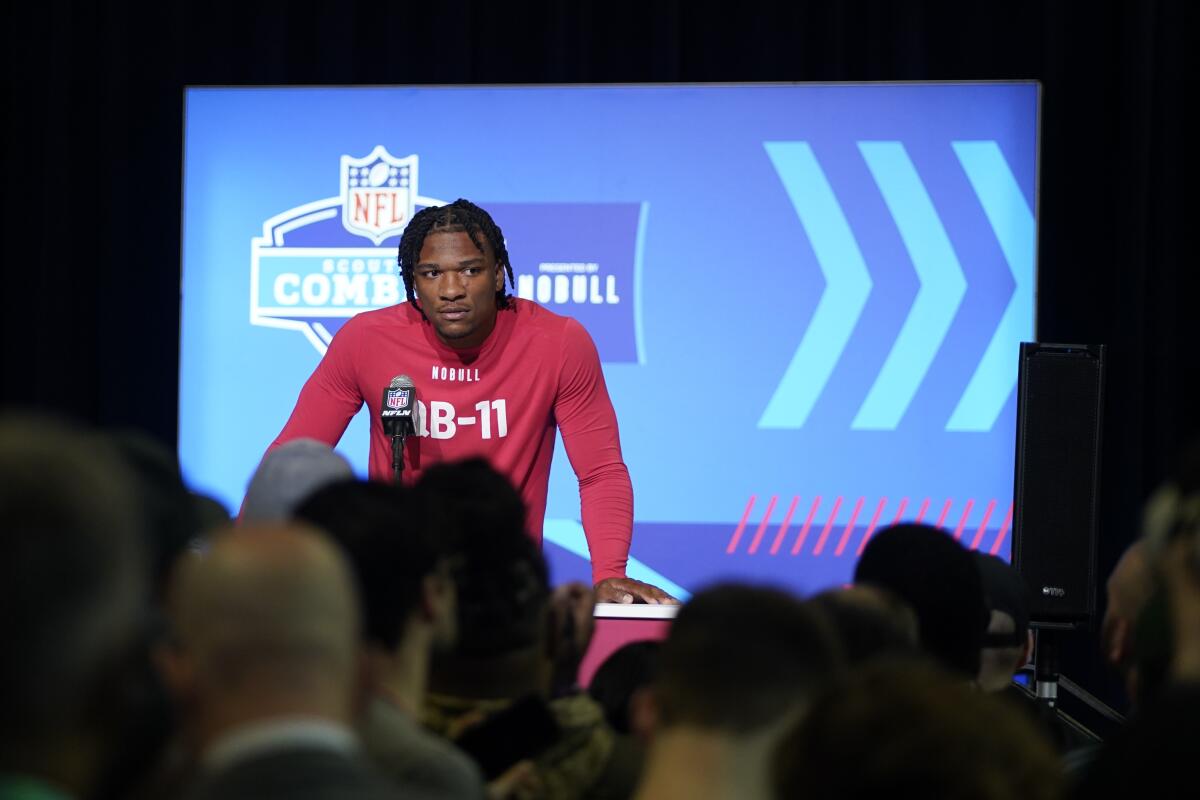
While some might find those comments innocuous, others might see them as pointing a finger at his receivers. That’s something that might not go over well in an NFL locker room, especially if it came from a rookie.
Regardless, although he might have answered that in a more diplomatic way, that isn’t likely to have any impact on where he’s drafted. In fact, some teams might see it as just the type of fiery competitor they want.
Already, Richardson is holding himself to a lofty standard — and setting himself apart. He ran a 4.43-second 40-yard dash, the fourth fastest by a quarterback since 2003, broke the combine record for QBs with a 40½-inch vertical jump, and his 10-foot 9-inch broad jump tied Matt Jones of Arkansas for best by a passer since 2003.
“I want to be a legend,” he said. “I want to be like Patrick Mahomes. I want to be like Tom Brady. I want to be one of the greats. I will be one of the greats because I’m willing to work that hard and get to that point. To answer your question, I feel like I’m going to be one of the greats for the next few years.”

